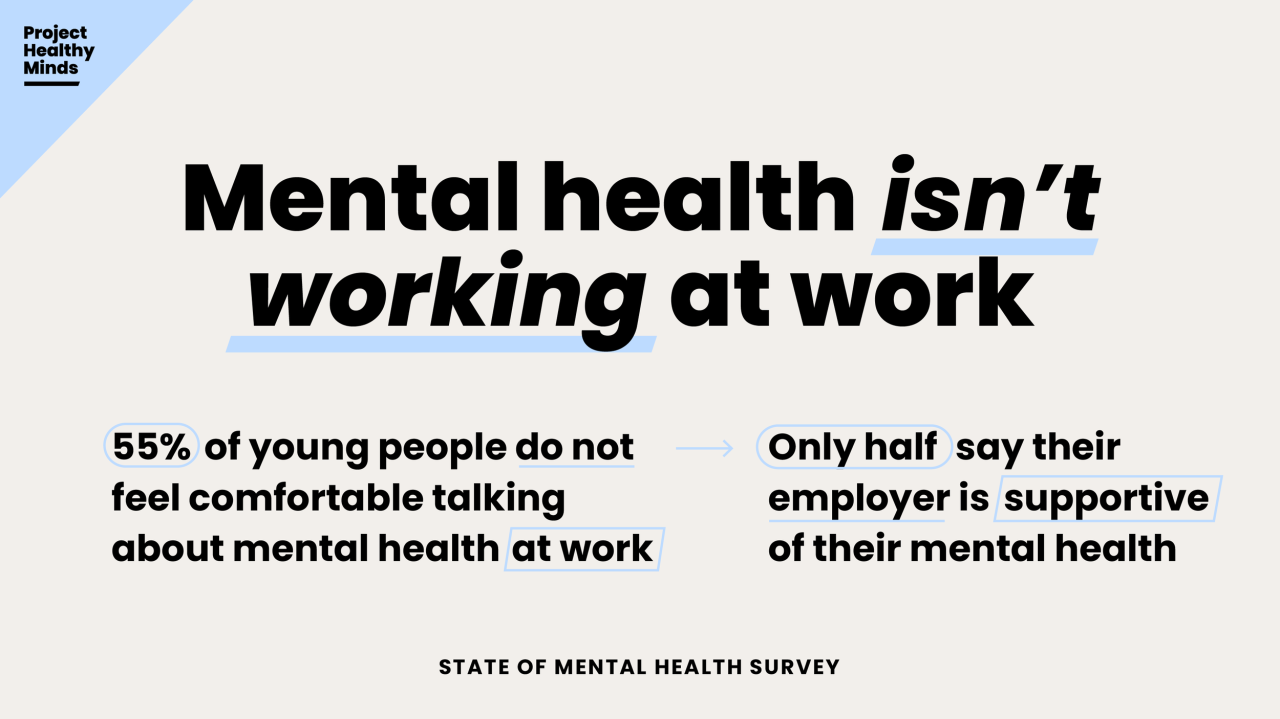Take Care of Yourself
August 16, 2022
Mathias Gran
Today, a colleague shared this survey from Project Healthy Minds calling out the necessity for organizations and leaders to understand how the emerging workforce is demanding adaptation and progress from workplace experiences.
Although Work With Feelings doesn’t focus on mental health advocacy, I can promise you that workplace experiences are heavily impacted by the mental health of individuals and teams. The numbers in the report are staggering. The lack of skill (and scale) in workplaces to approach this challenge is also staggering.
So, let’s imagine that you have influence, that this data motivates you, and you want to see mental health advocacy at your organization. You’ll probably invest in some HR-led activities to provide more “awareness” or “flexibility” for people to manage “their stuff.” You might be able to approve a handful of hours of mandatory training for managers. And you will likely be able to organize some ongoing topical programming. Ultimately you’ll roll out a “take the time to take care of yourself” scaffolding of policy changes and palatable narratives.
Have we progressed? Will this change your culture toward mental health at your organization? Will it create a meaningful change for the roughly 50% of your organization that both struggles with anxiety and doesn’t feel comfortable discussing it at work?
Project Healthy Minds recommends five actions. I think the deal-makers are: “2) training managers on mental health”, and “5) demonstrating that their commitment to mental health is authentic.” 5 will be blocked by 2, and 2 is not satisfied with a box-checking session.
Work With Feelings has mostly cared about how people interact and surfacing leadership behaviors that support or suppress team-level greatness. So, let’s think about what this data means for you as a leader or manager.
How might the way your personal values or leadership style influence the experience of your team members? When 47% of employees “report feeling anxious ‘all the time’ or ‘frequently'”, and work is one of two primary sources of said anxiety, how are your behaviors influencing levels of anxiety for the group or individuals?
Here are a few hints:
- Low trust = High anxiety.
- Low empowerment = High anxiety.
- Low flexibility = High anxiety.
- Low autonomy = High anxiety.
- Low clarity = High anxiety.
- Low perceived control = High anxiety.
How are you facilitating conversations? Are you mostly talking (directing) or mostly listening and inquiring (empowering)?
How are you setting expectations? Are you crafting stories that emotionally connect to aspirations and purpose as a team, or do you primarily state goals with requirements and dates?
How do you react when people make mistakes? Do you take control, criticize them, or perhaps pile on to their own disappointment? Or do you help them reflect to identify improvement opportunities, assess the impact, and help them own the remediation steps?
Organizations don’t make it ok to have feelings at work. People do. Leaders do. Managers do. Team members do.
Just as mental health is deeply personal, so is the development journey of every leader or aspiring leader in your organization. If you want to push this change for the betterment of your organization and our society, you have to be stocked with people who are willing to be on their own journey. And not everyone is ready.
Take care of yourself. That’s the best we’ve got so far.
